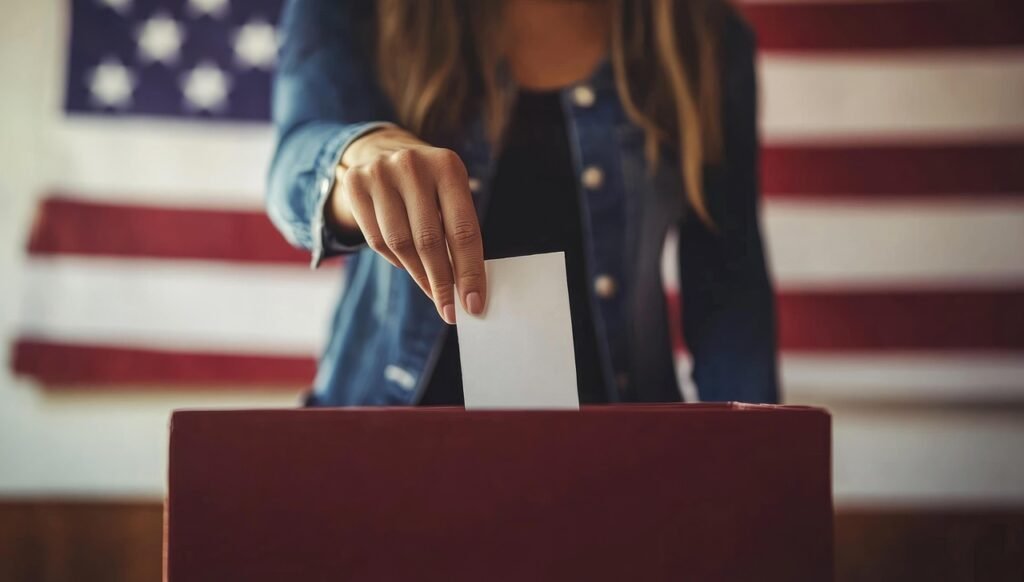The 2025 New York City mayoral election has become one of the most closely watched political contests in the United States, drawing international attention for its dramatic twists, generational clash, and the surprising rise of a progressive outsider. For UK readers, the race offers a fascinating glimpse into the evolving dynamics of American urban politics and the challenges facing one of the world’s most influential cities.
A Race Defined by Change
This year’s mayoral contest was set against a backdrop of political upheaval and public discontent. Incumbent Mayor Eric Adams, once seen as a strong favourite for re-election, found himself mired in scandal and corruption allegations. Although federal charges against him were dropped, Adams announced he would skip the Democratic primary to run as an independent, leaving the field wide open for new contenders.
The Democratic primary, held on 24 June, quickly became a two-man race between former Governor Andrew Cuomo and 33-year-old state Assemblymember Zohran Mamdani. Cuomo, seeking a political comeback after resigning as governor amid sexual misconduct allegations, positioned himself as an experienced moderate and champion of public safety. Mamdani, a democratic socialist and the son of Ugandan immigrants, ran on a platform focused on affordability, rent freezes, and bold social reforms.
The Mechanics: Ranked-Choice Voting in Action
New York’s use of ranked-choice voting (RCV) added another layer of intrigue to the contest. Under this system, voters could rank up to five candidates in order of preference, with votes redistributed until a candidate surpassed 50 percent. This approach, only in its second use for a mayoral primary, encouraged coalition-building and strategic alliances.
Mamdani’s campaign embraced RCV, cross-endorsing third-place finisher Brad Lander and appealing to a broad, multi-ethnic coalition. Cuomo, meanwhile, relied on a well-funded campaign and endorsements from centrist figures, including former President Bill Clinton. The stage was set for a generational and ideological showdown.
The Issues: Cost of Living, Safety, and Identity
At the heart of the campaign were starkly different visions for New York’s future. Mamdani promised sweeping reforms to make the city more affordable: freezing rents on regulated apartments, rolling out free bus services, creating city-run grocery stores, and providing universal childcare. He also pledged to “Trump-proof” the city by protecting immigrants and expanding LGBTQ+ rights. His climate proposals, including a $3.27 billion plan to retrofit public schools with renewable energy, drew both praise and criticism for their ambition and cost.
Cuomo, by contrast, focused on his record of delivering large-scale projects and promised to tackle crime by adding 5,000 new police officers. He emphasised his experience as essential for leading the city through turbulent times and restoring confidence in government. His campaign was bolstered by a $25 million super PAC, which flooded airwaves with pro-Cuomo and anti-Mamdani messaging.
A Campaign of Contrasts and Controversy
The race was not without controversy. Cuomo’s critics pointed to his pandemic-era record, particularly the high number of nursing home deaths, and the sexual harassment allegations that led to his resignation. Mamdani, meanwhile, faced attacks over his progressive stances and was targeted with anti-Muslim threats during the campaign. The Middle East conflict also became a flashpoint, with Cuomo pledging support for Israel and Mamdani advocating for Palestinian rights.
Despite the heated rhetoric, Mamdani’s grassroots campaign gained momentum in the final weeks. Polls showed a surge in his support, especially among younger and more diverse voters, while Cuomo maintained an edge among older and Black voters. Early voting and primary day turnout were strong, with New Yorkers braving a record-breaking heatwave to cast their ballots.
The Results: A Progressive Victory
As the votes were counted, Mamdani emerged as the early leader, securing 43.5 percent of first-choice votes to Cuomo’s 36.3 percent, with Lander in third. With ranked-choice tabulation still pending, Cuomo conceded on election night, acknowledging Mamdani’s remarkable upset. The final results, expected by July 1, are likely to confirm Mamdani as the Democratic nominee—a position that, in heavily Democratic New York, makes him the favourite for November’s general election.
If elected, Mamdani would become the city’s first South Asian and Muslim mayor, marking a historic shift in New York’s political landscape. His victory signals a generational and ideological realignment, with progressive policies and grassroots activism overcoming establishment power and big-money campaigning.
What’s Next: The General Election
While Mamdani leads the race, the general election in November is not a foregone conclusion. He will face Mayor Eric Adams, now running as an independent, as well as Republican Curtis Sliwa and independent Jim Walden. Both Adams and Cuomo have significant name recognition and could draw support from moderate and centrist voters, especially in a city where public safety and cost of living remain top concerns.
The outcome will depend on whether Mamdani can broaden his appeal beyond the progressive base and reassure voters about the feasibility of his ambitious proposals. For now, his victory in the Democratic primary stands as a testament to the power of grassroots organising and the changing face of urban politics in America’s largest city.
Conclusion
The 2025 New York mayoral election has upended expectations, with a young, progressive outsider poised to lead a city at a crossroads. For UK observers, the race offers valuable insights into the challenges facing global cities: rising costs, demands for social justice, and the enduring tension between experience and change. As New Yorkers prepare for the next stage of the contest, the world will be watching to see if this progressive wave can carry all the way to City Hall.
To read more click here

